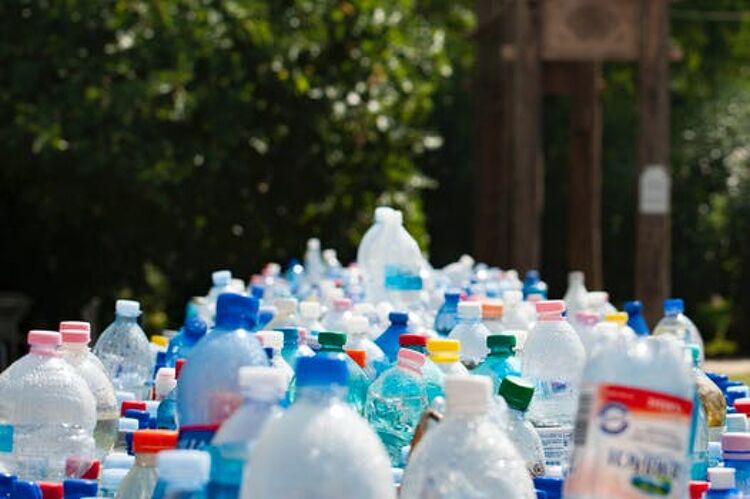Banning plastic for the benefit of the environment

Laurel Brunner discusses the necessity to ban plastic in order to save and preserve the environment and the measures countries are taking to do so.
First China, now Europe are taking large steps to clean the environment and by doing so their actions may create opportunities in the graphics industry or be another nail in the sector’s coffin. Opportunities exist if both packaging printers and brand owners get involved and take the lead in the recycling discussion. The fact that certain materials are hard to recycle should act as a prompt to supply chains to be more inventive regarding the materials they use and their impact on the environment. A great start would be to launch a public awareness campaign demonstrating which plastics can be recycled and how.
China has now banned imports of foreign recyclable materials to stop “foreign trash” or “yang laji” entering China. This ban applies to 24 waste categories and includes textiles, plastics and mixed paper.
During 2017, 7.3 million metric tonnes of plastic was shipped to China to be used in manufacturing from developed economies including the UK, EU, USA and Japan. China is the world’s largest manufacturer and imports more waste for recycling than any other country. Currently China is working on its own procedures for recycling. Other countries cannot sell recyclates to China and will need to produce new recycling business models. China’s Ministry of Environment Protection has commented that “we discovered that large amounts of dirty wastes or even hazardous wastes are mixed in with the solid waste that can be utilised as raw materials, which has seriously polluted the environment.”
The European Union (EU) has sent 87% of its collected plastic to China andis now making optimistic changes. The EU are aiming for all plastic in its community to be reusable or recyclable by the year 2030. Presently only 30% of the 25 million tonnes that is generated is collected for incineration or recycling. The EU's strategy is to modernise plastic production, taxes and the investment of €350 million into research that covers new approaches to collection. This will be an opportunity for the packaging industry and companies supplying it to create innovative ideas to solve process management problems and quality control to offer technological innovation.
Taxation requires impact assessments and extensive discussions about how and who to tax. Taxation is fundamentally a license to evade good practice which has been a portion of the issue all along. But 2030 is not that far away. EU Vice President, Frans Timmermans has commented that “the immediate target is single-use plastics and shifting people’s behaviour. Single-use plastics that take 5 seconds to be produced, you only use it for 5 minutes but it takes up to 500 years to break down again.”
Materials such as plastic straws, stirrers, lids, cups and other types of containers and packaging take a long time to biodegrade or simply don’t biodegrade at all. By 2030 the EU are hoping that 55% of all plastic will be recycled which will impact graphics technologies such as finishing system and digital presses which will have to be able to process new materials. Print companies will be forced to invest in these new technologies if they wish to keep brand customers on side. Now is the time to act.
Source: This article was produced by the Verdigris project, an industry initiative intended to raise awareness of print’s positive environmental impact. This commentary helps printing companies keep up to date with environmental standards, and how environmentally friendly business management can help improve their bottom lines. Verdigris is supported by the following companies: Agfa Graphics, Spindrift.click, EFI, FESPA, HP, Kodak, Kornit Digital, Ricoh, Splash PR, Unity Publishing and Xeikon.
Topics
Interested in joining our community?
Enquire today about joining your local FESPA Association or FESPA Direct
Recent news

Streamlining personalisation with tech: Insights from the SmartHub Conference 2025 speakers
Personalisation Experience 2025 (6 – 9 May 2025, Messe Berlin, Germany) is running its inaugural SmartHub Conference from 6 – 8 May 2025.

Special Effects in DTF: How Neon Inks Are Making Apparel Pop
Neon fluorescent inks are the latest innovation in DTF printing, offering vibrant, eye-catching effects under both daylight and UV light, giving apparel decorators a competitive edge. Testing shows good wash durability, though market perception of added value is still developing. With increasing adoption and ongoing technological advancements, neon represents a significant upgrade for creative customisation.

Unlocking Growth Opportunities in the Printed Personalised Apparel Industry
The printed personalised apparel industry is booming, projected to reach $10.1 billion by 2030. Driven by consumer desire for self-expression and branding needs, technological advancements like DTG/DTF and e-commerce integration are key. Sustainability, eco-friendly materials, and on-demand printing are crucial growth drivers. Businesses leveraging these trends, including AI and social media, have significant commercial potential.

How to grow your business with white ink applications
Opaque white ink is revolutionising signage, vehicle graphics, wallcoverings, short-run and wood packaging, and window blinds by enhancing vibrancy and clarity. This enables printers to offer high-demand, standout products, boosting profit margins. HP Latex white ink applications and their large format printing solutions will be showcased at FESPA 2025 in Berlin.